Die Borte aus Evebø
Die Borte datiert in das 6. Jhd. und wurde im Jahr 1889 als Teil des Fürstengrabes von Evebø in Gloppen, Norwegen ausgegraben.
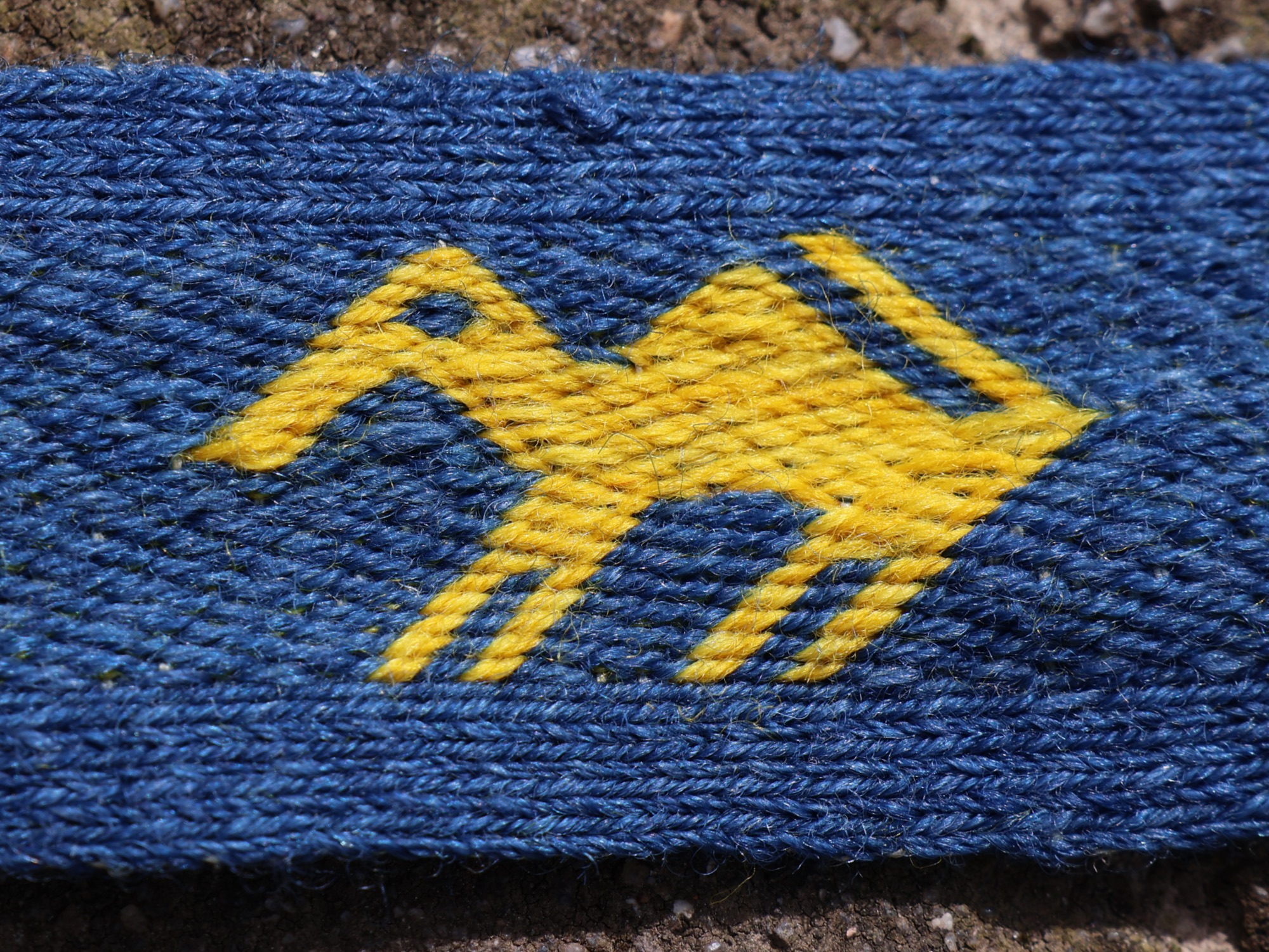 In dem Grab fand man diverse Textilien, u.a. eine rote Tunika die mit dieser Borte verziert wurde.
In dem Grab fand man diverse Textilien, u.a. eine rote Tunika die mit dieser Borte verziert wurde.
Ursprünglich ist es eine blaue Borte mit roten - phantasievollen - Tiermotiven. So ganz entziffern welche Tiere es sind, kann man bis heute nicht.
The border dates back to the 6th century and was excavated in 1889 as part of the royal tomb of Evebø in Gloppen, Norway.
Various textiles were found in the grave, including a red tunic decorated with this border.
Originally it was a blue border with red - imaginative - animal motifs. It is still not entirely clear which animals it is.
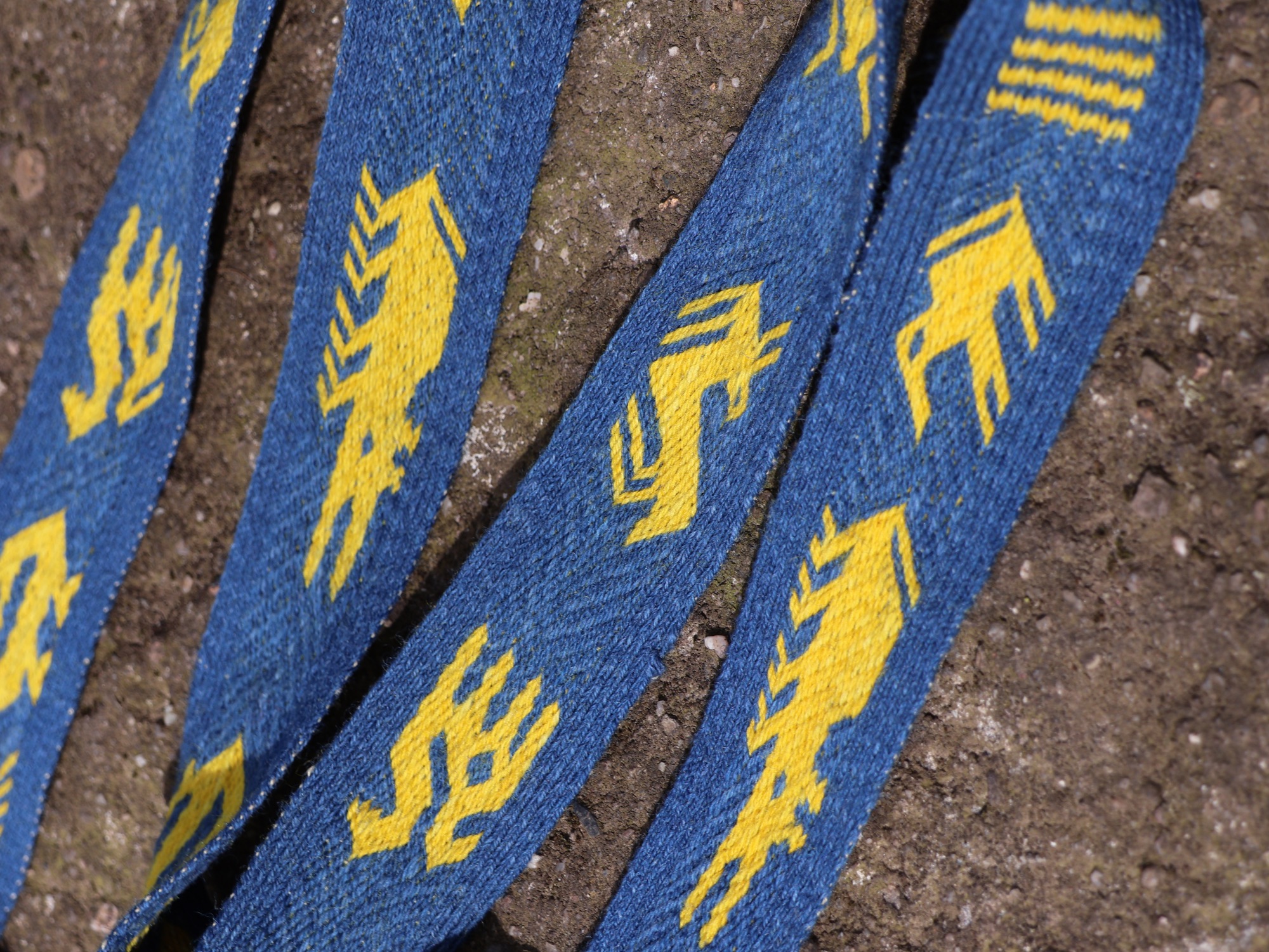
Insgesamt sind zwei Fragmente erhalten. Ein längeres mit insgesamt 4 ganzen Motiven und einem halben Motiv und ein weiteres mit noch einem weiteren Motiv.
Auffallend ist der breite einfarbige Rand, wo alle Brettchen in eine Richtung gedreht werden. In den erhaltenen Fragmenten ist kein Richtungswechsel zu erkenne

A total of two fragments have survived. A longer one with a total of 4 whole motifs and a half motif and another with yet another motif.
The wide monochrome border is striking, where all the tablets are turned in one direction. No change of direction can be recognised in the surviving fragments
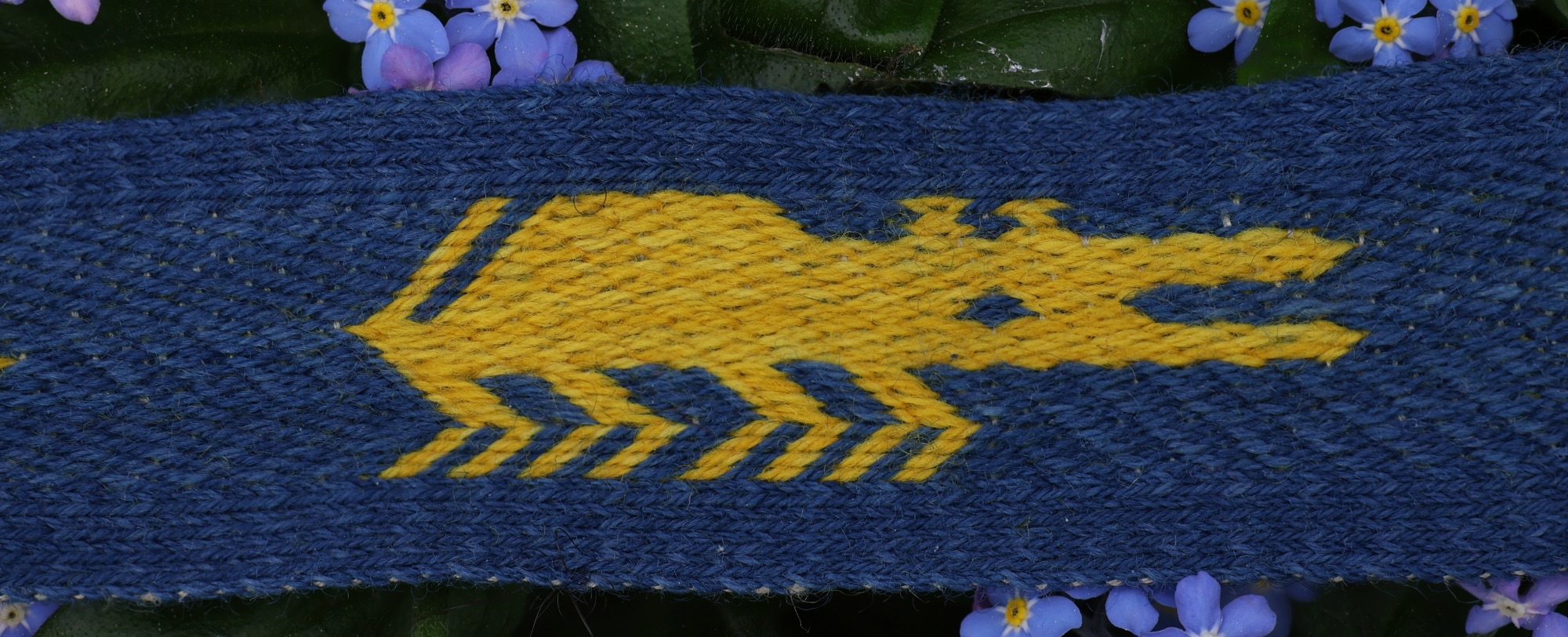
Das unvollständige Motiv habe ich nach eigenem Gutdünken vervollständigt, damit man ein durchgehendes Band weben kann. Ich habe die Motive als reines Köpermuster ohne großen Schnickschnack nachgearbeitet. Es entspricht nicht zu 100% dem Original Fund, der noch das eine oder andere zusätzliche Detail zu bieten hat.
Hier empfehle ich eine geplante Publikation von Randi Stoltz. Ich hatte 2024 die Chance, mit ihr über diesen Fund zu sprechen und habe sehr viel dazu gelernt.
Ich habe das Band mit insgesamt 38 Brettfchen nachgewebt. 20 Musterbrettchen und an jeder Seite 9 Randbrettchen, die abwechselnd in S & Z gestellt werden und kontinuierlich in eine Richtung gedreht werden.
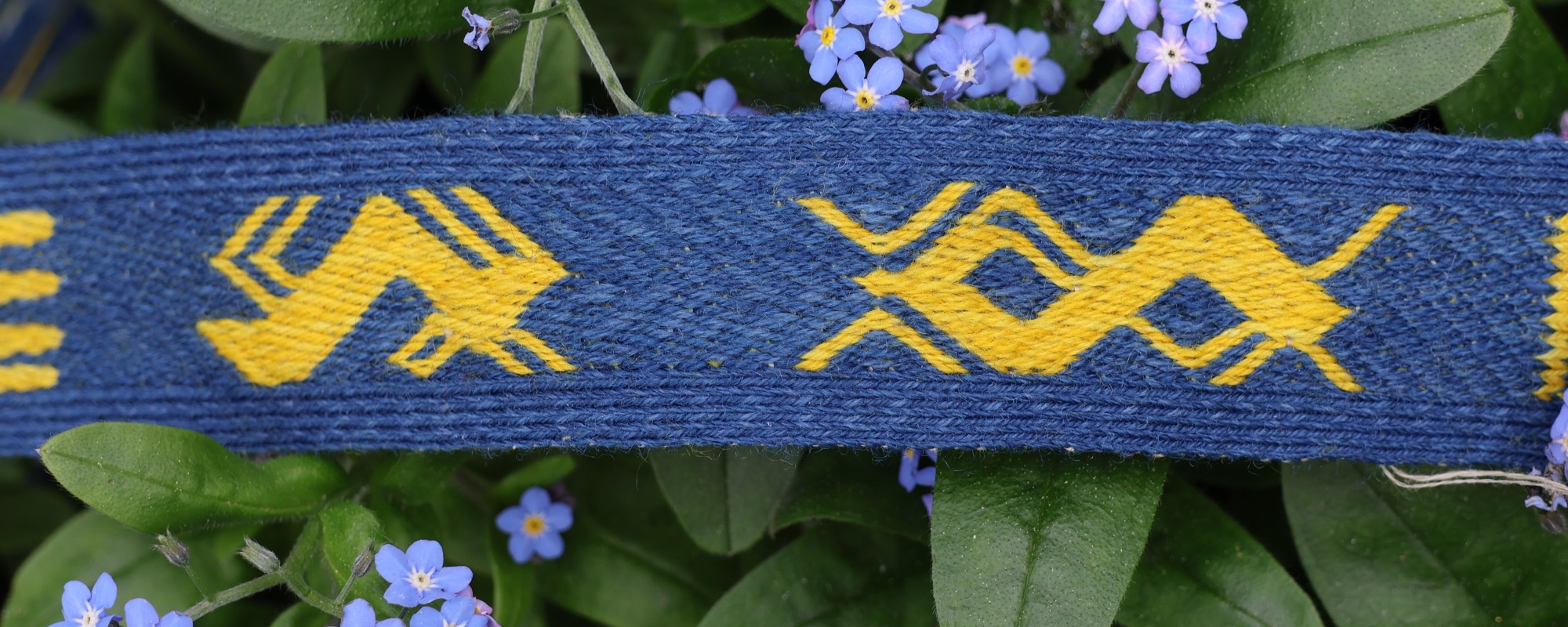
I completed the incomplete motif as I saw fit so that I could weave a continuous band. I reworked the motifs as a pure twill pattern without any big extra details. It does not correspond 100% to the original find, which still has one or two additional details to offer.
Here I recommend a planned publication by Randi Stoltz. I had the chance to talk to her about this find in 2024 and learnt a lot.
I have rewoven the band with a total of 38 tablets. 20 pattern tablets and 9 edge tablets on each side, which are alternately placed in S & Z and continuously turned in one direction.
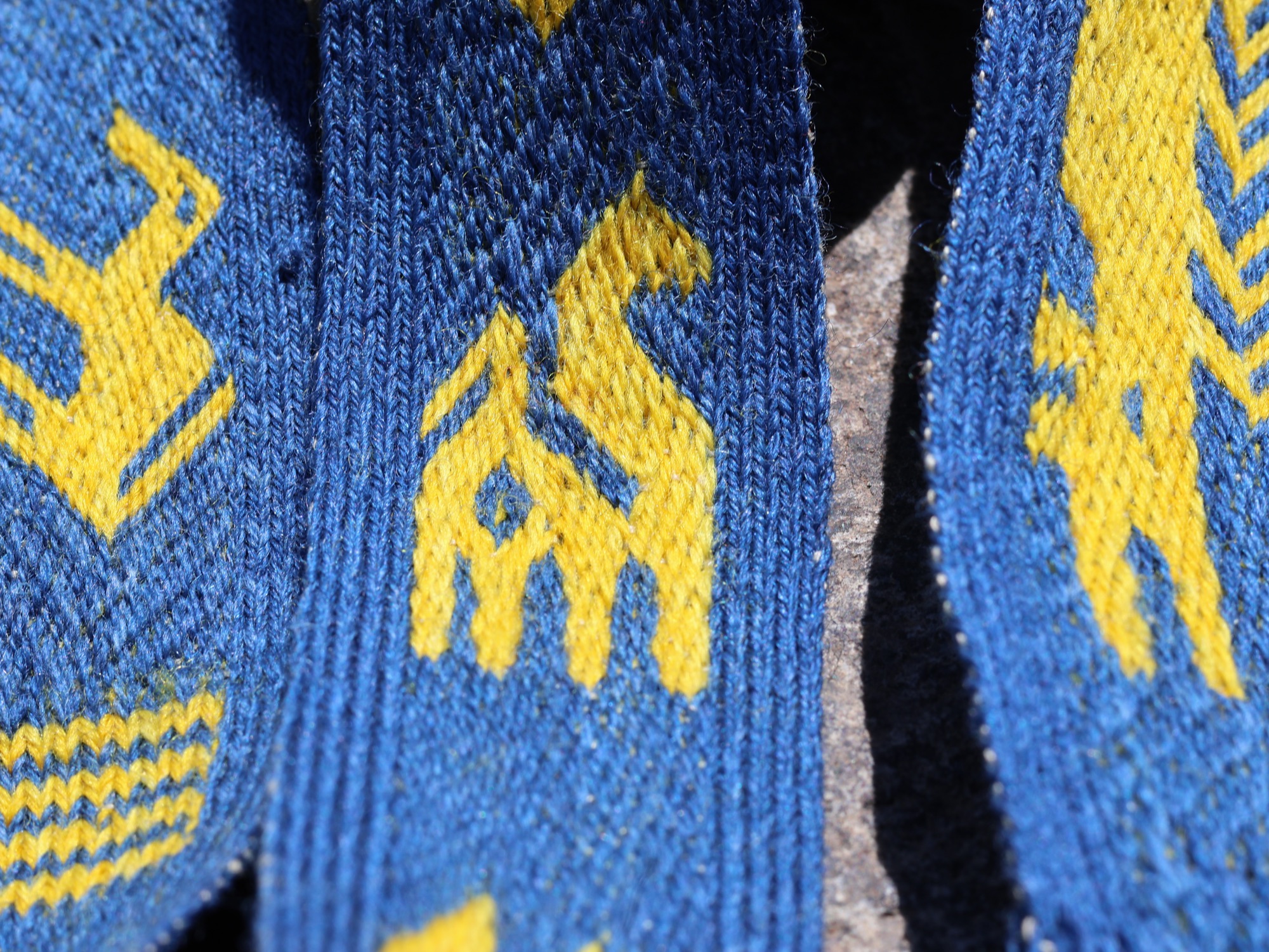
Die Anleitung für das von mir vervollständigte Motiv habe ich hier veröffentlicht.
I have published the instructions for the motif I completed here
Literatur:
Gustafson, Gabriel (1890a): Evebøfundet og nogle andre ny gravfund fra Gloppen. Bergens Museums Aarsberetning for 1889.
John Griegs Bogtrykkeri: Bergen
Lise Ræder Knudsen Ancient Running Animals: Tablet-Woven borders from China and Norway . In: Marie Louise Nosch, Zhao Feng and Lotika Varadarajan. Global Textile Encounters. Oxford, 2014 p. 37-48.
Margareta Nockert, The Högom find and other Migration Period Textiles and Costumes in Scandinavia,1991
